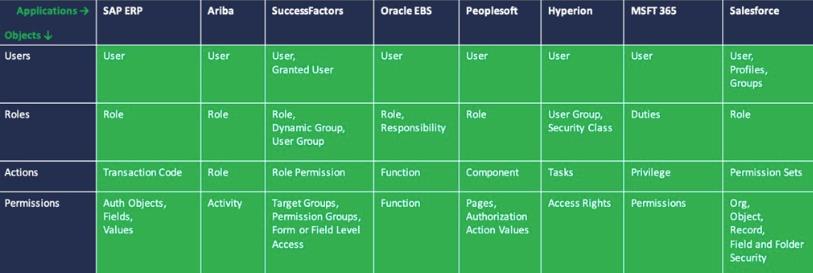 Cross-application business processes have unlocked best-of-breed solutions but are introducing new access risks. The proliferation of these business processes has also shifted how organizations must address Segregation of Duties (SoD). Today’s security models span a variety of applications. This makes it critical for enterprises to identify SoD conflicts across apps and enable continuous controls monitoring to detect actual violations as they occur.
Cross-application business processes have unlocked best-of-breed solutions but are introducing new access risks. The proliferation of these business processes has also shifted how organizations must address Segregation of Duties (SoD). Today’s security models span a variety of applications. This makes it critical for enterprises to identify SoD conflicts across apps and enable continuous controls monitoring to detect actual violations as they occur.
Digital Transformation & Shifting Access Governance Needs: Rethink Your SoD
While traditional application-specific SOD solutions have sufficed in the past, today’s digitized business processes come with more regulations, more sensitive data, complexity, and potential risks (fraud, breach, financial loss). In addition, now you have multiple applications, each having its own security model that makes it extremely difficult to map your SoD risks across applications, let alone continuously monitor them. While some organizations may get by with siloed teams to govern access risk for each application, they can’t avoid the following trade-offs:
- Siloed SoD logs will leave you vulnerable.
- A siloed approach often creates gaps that are leveraged for data breaches, fraud, and failed audits.
- It is difficult to identify cross-app SoD violations from a constant stream of false positives
With a 68% increase in the number of software apps deployed by global firms, sample testing a high volume of activities will inevitably lead to poor audit findings, leakage in business, and lost revenue.

Attempting to Manage Application Risk at the Individual Application Level is a Losing Proposition.
Why IGA Solutions Can’t Handle Cross-App SoD Violations
While it makes sense for organizations to try and leverage Identity Governance and Administration (IGA) solutions to handle cross-app SoD, they’ll quickly discover they’re missing the needed granularity. Others might set up specialized teams and additional auditors to compensate. Either way, they end up stuck with manual processes and unaddressed risks that, at best, stifle innovation and, at worst, lead to material weaknesses and audit deficiencies. Moreover, teams opting for IGA solutions focus mainly on the top layers. They don’t invest the time or money to go into the applications for actions and permissions. Therefore, they miss out on the application-specific shortcomings.
Consolidate, Correlate, Mitigate: A Single Pane Of Glass For Cross-App SoD
Using a siloed app-by-app approach for SoD analysis is only going to multiply your audit and compliance costs. Pathlock enables cross-app SoD control monitoring that lets you bring everything into a centralized location under one dashboard. You now have a single pane of glass that acts as one dashboard to monitor SoD. With cross-app SoD rulesets and correlation, you also have complete coverage of all the SoD activity across your application landscape. Combining a deep understanding of entitlements and user activity for 360-degree risk analysis, Pathlock enables continuous controls monitoring to detect actual SoD violations as they occur.
Watch our on-demand webinar to learn how Pathlock helps you:
- Identify potential SoD risks within and across business applications
- Automatically sample 100% of your transactions and only review exceptions
- Quantify the financial impact, so you only have to remediate the transactions that matter
Contact us today to unify cross-application SoD across your business landscape.
![]()
Esha Panda (Content Writer, Pathlock)
SAST and Pathlock have merged to create the industry’s leading provider of Access Governance and Application Security. For more information visit our website or contact us.

